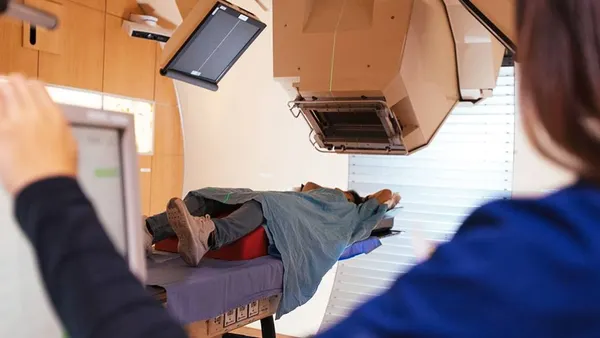Dive Brief:
- The Food and Drug Administration approved the first test that uses DNA to determine whether someone may have a greater risk of developing opioid use disorder.
- The AvertD test, developed by Autogenomics, is intended to be used before a patient has taken oral opioid pain medications, when considered for a prescription of four to 30 days for acute pain, such as when a patient is scheduled for planned surgery.
- The approval follows an overwhelming no vote from an FDA advisory committee in October 2022 on the safety and efficacy of an earlier version of the test. However, Jeff Shuren, director of the FDA’s Center for Devices and Radiological Health, said in a Tuesday statement that the agency worked with Autogenomics after the meeting as the company modified the test.
Dive Insight:
The AvertD test uses a DNA sample from a cheek swab collected by a healthcare provider. The test is intended to determine whether a patient has a combination of genetic variants that could be associated with developing an elevated risk of opioid use disorder. According to the FDA’s statement, the information should not be used solely for treatment decisions, and the test is not intended for patients being treated for chronic pain.
“AvertD may help patients who are concerned about being treated with an opioid for acute pain make better informed decisions,” Shuren said in the statement.
In October 2022, the Medical Devices Advisory Committee’s Clinical Chemistry and Clinical Toxicology Devices Panel recommended against an earlier version of the test by a 2-11 vote on whether the benefits of the device outweigh the risks. The meeting was held to evaluate information for the test’s de novo application.
Following the committee meeting, the FDA worked with Autogenomics as it modified the test, and the company eventually submitted a premarket approval application. Shuren explained the advisory committee’s feedback helped in the evaluation and approval of the test.
As part of the approval, Autogenomics is required to train providers on how to use the test and conduct a large post-market study to evaluate the test’s performance. The company must also regularly report to the FDA on the study’s progress.
“Given the totality of available evidence and the urgent need for medical devices that can make a positive impact on the overdose crisis, and specifically devices that can help assess the risk of developing [opioid use disorder,] the FDA determined that there is a reasonable assurance of AvertD's safety and effectiveness, taking into consideration available alternatives, patients’ perspectives, the public health need and the ability to address uncertainty through the collection of post-market data,” Shuren said.
The primary risks associated with AvertD are false negative and positive results. False negatives could lead to a “false sense of security” for someone who may have an increased risk of opioid use disorder, while false positives could lead to inadequate pain management treatment, according to the statement.
The test is prescription-use only and for patients 18 and older who consent to the test being conducted and who have no prior use of oral opioid analgesics.














